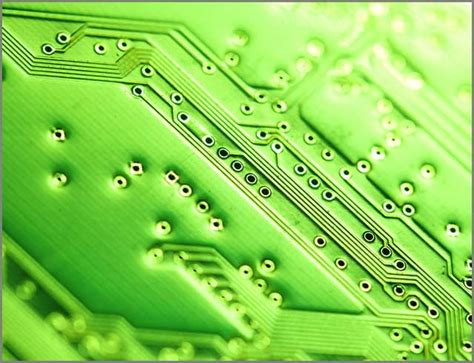Introduction
Printed Circuit Boards (PCBs) are the backbone of modern electronics. They are used in almost every electronic device, from smartphones to medical equipment. However, not all PCBs are created equal. Many manufacturers offer cheap PCBs to attract customers, but these low-cost options often come with hidden costs and risks. In this article, we will explore the big trap of cheap PCBs and how to avoid falling into it.
The Allure of Cheap PCBs
Why Do People Choose Cheap PCBs?
- Cost savings
- Quick turnaround times
- Ease of ordering online
The Hidden Costs of Cheap PCBs
- Lower quality materials
- Inferior manufacturing processes
- Lack of quality control
- Higher failure rates
- Longer delivery times due to rework or replacement
The Risks of Using Cheap PCBs
Reliability Issues
Cheap PCBs often use lower-quality materials and inferior manufacturing processes, which can lead to reliability issues. These issues may include:
- Shorter product lifespan
- Intermittent failures
- Increased susceptibility to environmental factors (e.g., temperature, humidity)
Safety Concerns
Using cheap PCBs in critical applications, such as medical devices or aerospace equipment, can pose serious safety risks. Some potential safety concerns include:
- Electrical shorts or open circuits
- Overheating due to poor thermal management
- Failure to meet industry standards and regulations
Intellectual Property Risks
When working with cheap PCB manufacturers, there is a higher risk of intellectual property theft. Some manufacturers may:
- Sell your design to competitors
- Produce counterfeit products using your design
- Fail to protect your sensitive information

How to Avoid the Cheap PCB Trap
Choose a Reputable Manufacturer
- Look for manufacturers with a proven track record
- Check for industry certifications (e.g., ISO, UL, RoHS)
- Read customer reviews and testimonials
Prioritize Quality Over Cost
- Invest in high-quality materials
- Ensure proper manufacturing processes are followed
- Implement strict quality control measures
Consider the Total Cost of Ownership
When evaluating PCB options, consider the total cost of ownership, which includes:
- Initial purchase price
- Potential rework or replacement costs
- Opportunity costs associated with delays or failures
Protect Your Intellectual Property
- Use non-disclosure agreements (NDAs)
- Work with manufacturers that have strong IP protection policies
- Consider split manufacturing for sensitive designs
Real-World Examples
Example 1: Smartphone Manufacturer
A smartphone manufacturer opted for cheap PCBs to reduce production costs. However, the low-quality boards led to frequent device failures and negative customer reviews. The company had to issue a costly recall and suffered significant damage to its reputation.
Example 2: Medical Device Startup
A medical device startup used cheap PCBs in their prototype to save money during development. The boards failed to meet safety standards, delaying the product’s launch and requiring expensive redesigns. The startup lost valuable time and resources as a result.
FAQ
Q1: Are all low-cost PCBs inherently bad?
A1: Not all low-cost PCBs are inherently bad, but it’s essential to be cautious when considering cheap options. Some manufacturers may offer competitive prices while still maintaining acceptable quality standards. However, it’s crucial to thoroughly research the manufacturer and their processes before making a decision.
Q2: How can I identify a reputable PCB manufacturer?
A2: To identify a reputable PCB manufacturer, look for companies with industry certifications, such as ISO, UL, or RoHS. Read customer reviews and testimonials to gauge their experience and reliability. Additionally, consider reaching out to the manufacturer directly to discuss your specific requirements and evaluate their communication and expertise.
Q3: What are the potential consequences of using cheap PCBs in critical applications?
A3: Using cheap PCBs in critical applications, such as medical devices or aerospace equipment, can have severe consequences. These may include device failures that jeopardize patient safety, non-compliance with industry regulations, and potential legal liabilities. It’s essential to prioritize quality and reliability when selecting PCBs for critical applications.
Q4: How can I protect my intellectual property when working with PCB manufacturers?
A4: To protect your intellectual property, use non-disclosure agreements (NDAs) when sharing sensitive information with manufacturers. Work with companies that have strong IP protection policies and a proven track record of maintaining client confidentiality. In some cases, you may also consider split manufacturing, where different components of your design are produced by separate manufacturers to minimize the risk of IP theft.
Q5: Is it always more expensive to choose high-quality PCBs over cheap options?
A5: While high-quality PCBs may have a higher initial purchase price, they can often be more cost-effective in the long run. Cheap PCBs are more likely to require rework, replacement, or lead to product failures, which can result in significant additional costs. When evaluating PCB options, consider the total cost of ownership, including potential risks and long-term expenses, rather than focusing solely on the upfront price.
Conclusion
Cheap PCBs may seem like an attractive option for cost-conscious manufacturers, but they often come with hidden risks and expenses. By prioritizing quality, choosing reputable manufacturers, and protecting your intellectual property, you can avoid falling into the cheap PCB trap. Remember, the true cost of a PCB extends beyond its initial purchase price, and investing in high-quality boards can save you time, money, and headaches in the long run.
| Factor | Cheap PCBs | High-Quality PCBs |
|---|---|---|
| Materials | Lower quality | Higher quality |
| Manufacturing Processes | Inferior | Superior |
| Quality Control | Lack of QC | Strict QC measures |
| Failure Rates | Higher | Lower |
| Delivery Times | Longer due to rework/replacement | Shorter and more reliable |
By keeping these factors in mind and following the guidance provided in this article, you can navigate the world of PCB manufacturing with confidence and avoid the pitfalls of cheap PCBs.

No responses yet